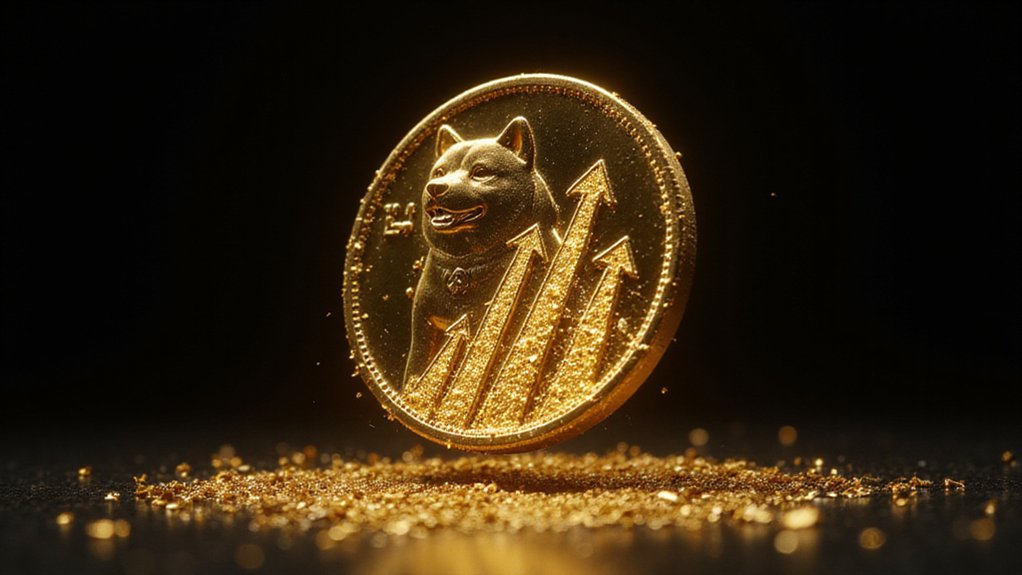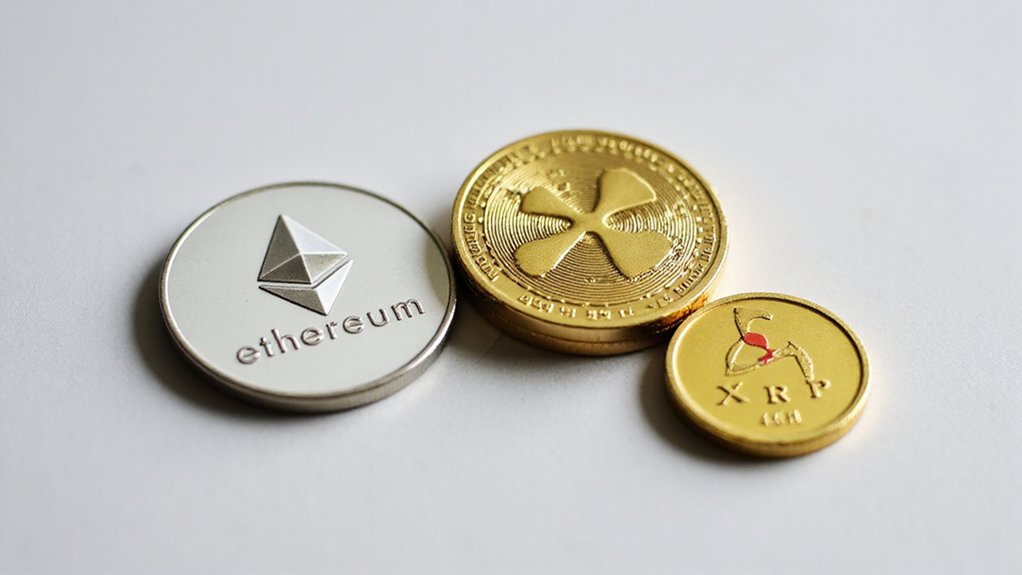While most financial instruments derive their value from earnings, assets, or utility, Dogecoin continues to confound traditional valuation models by trading on sentiment, memes, and the whims of social media—a phenomenon that renders conventional analysis both essential and absurdly inadequate.
Current technical forecasters suggest DOGE could achieve a 300% surge if it successfully reclaims critical resistance levels around $0.25, potentially propelling the cryptocurrency toward its ambitious $1.50 bullish target by 2025. This projection, while mathematically sound, relies heavily on the peculiar alchemy of retail investor enthusiasm and celebrity endorsement—factors that would make Benjamin Graham spin in his grave.
DOGE’s potential 300% surge depends on reclaiming $0.25 resistance—a projection built on memes rather than fundamentals.
The path to such astronomical gains faces immediate headwinds, with CoinCodex projecting a modest 17.54% rise to $0.232984 by mid-August 2025, while other analysts anticipate a retracement to $0.183 before any meaningful ascent. These conflicting predictions underscore DOGE’s fundamental challenge: its value proposition remains tethered to speculative fervor rather than intrinsic utility.
Historical precedent supports both optimistic and pessimistic scenarios. DOGE’s previous surge to $0.73 during 2021’s crypto euphoria demonstrated the asset’s capacity for vertical price discovery, yet subsequent corrections proved equally dramatic. The cryptocurrency’s volatility patterns suggest that while 300% gains remain theoretically achievable, they typically coincide with broader market cycles—particularly Bitcoin’s performance, which often dictates altcoin trajectories. With market sentiment currently showing a Fear-Greed Index score of 33, indicating widespread fear among investors, any potential recovery would need to overcome significant psychological barriers.
Current forecasts reveal stark disagreement among analysts, with estimates ranging from Wallet Investor’s bearish $0.02 projection to optimistic scenarios reaching $1.50. This wide variance reflects DOGE’s unique position as both a legitimate payment mechanism and a speculative vehicle driven by meme culture relevance. Despite the ambitious short-term predictions, long-term projections based on 5% annual growth suggest a more conservative path to $0.32 by 2030.
The critical level reclamation scenario depends on several catalysts: sustained social media momentum, continued influencer support, and broader crypto market strength. Macroeconomic conditions, regulatory developments, and payment adoption could provide fundamental support beyond mere speculation. Unlike traditional investment vehicles, DOGE holders cannot earn passive income through staking mechanisms that would provide annual returns between 5-15%, leaving the cryptocurrency entirely dependent on price appreciation for investor returns.
Whether DOGE achieves its 300% potential ultimately hinges on factors that traditional financial analysis struggles to quantify—the enduring appeal of internet culture and humanity’s apparently inexhaustible appetite for turning jokes into investment vehicles.








